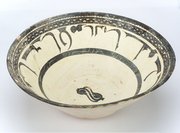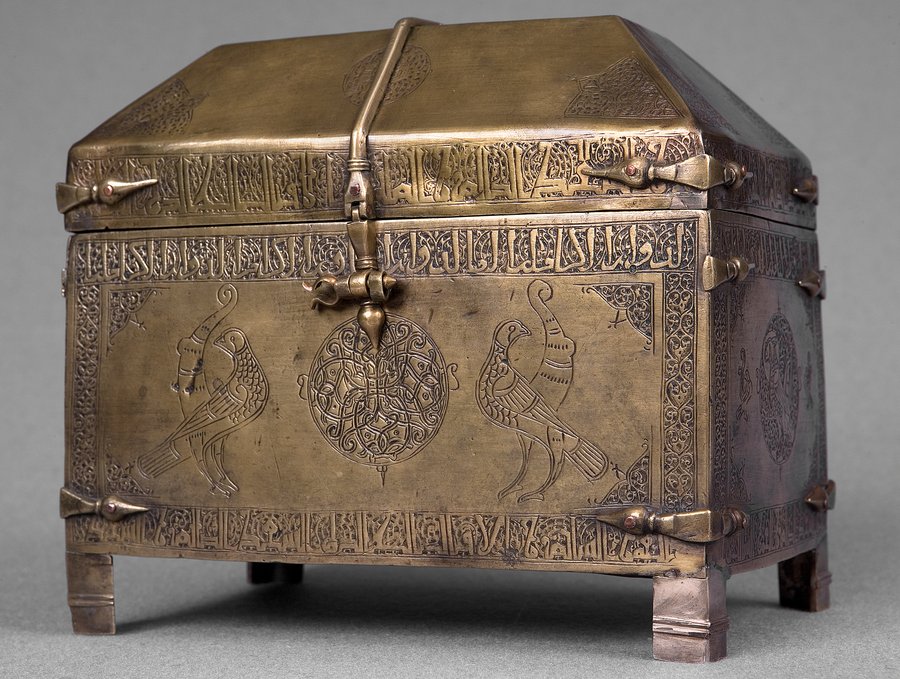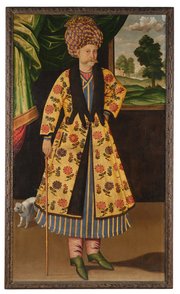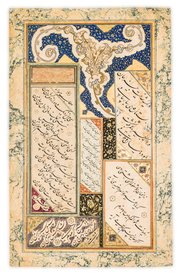
Norman Metal Casket
Museum of Islamic Art
- Title:
- Norman Metal Casket
- Production place:
- Sicily
- Date:
- 1150 - 1250
- Period:
- Norman
- Title:
- Norman Metal Casket
- Production place:
- Sicily
- Date:
- 1150 - 1250
- Period:
- Norman
- Material:
- Brass, Copper, Black compound, Solder
- Technique:
- Hammering, Casting, Engraving, Riveting, Soldering
- Dimensions:
- 21.1 × 23.5 × 14.5
This casket is fashioned from sheets of hammered metal, made from a mix of brass, copper, zinc and tin, formed into a rectangular shaped base with a pyramidal lid. The mounts and fittings are made of brass, with copper rivets used to secure them to the edges of the casket's base and lid. This casket is rather unusual, as far fewer examples of Norman metalwork exist compared to those made in ivory. Based on its incised decorations, which consist of bands of both kufic and naskhi Arabic calligraphy encircling its edges and stylized birds standing in single profile, this casket stylistically follows a group of similarly decorated 6th-7th century AH/ 12th-13th century CE ivory caskets with painted decorations attributed to either southern Italy or Sicily. Objects decorated in an Islamic tradition continued to be produced in Norman Sicily even after the island was no longer under Islamic rule. Buildings such as the Cappella Palatine in Palermo represent the most iconic example of the continuation of Islamic influences. The inscriptions on this casket are all benedictory in nature, praising good health, power, and fortune it its owner.



